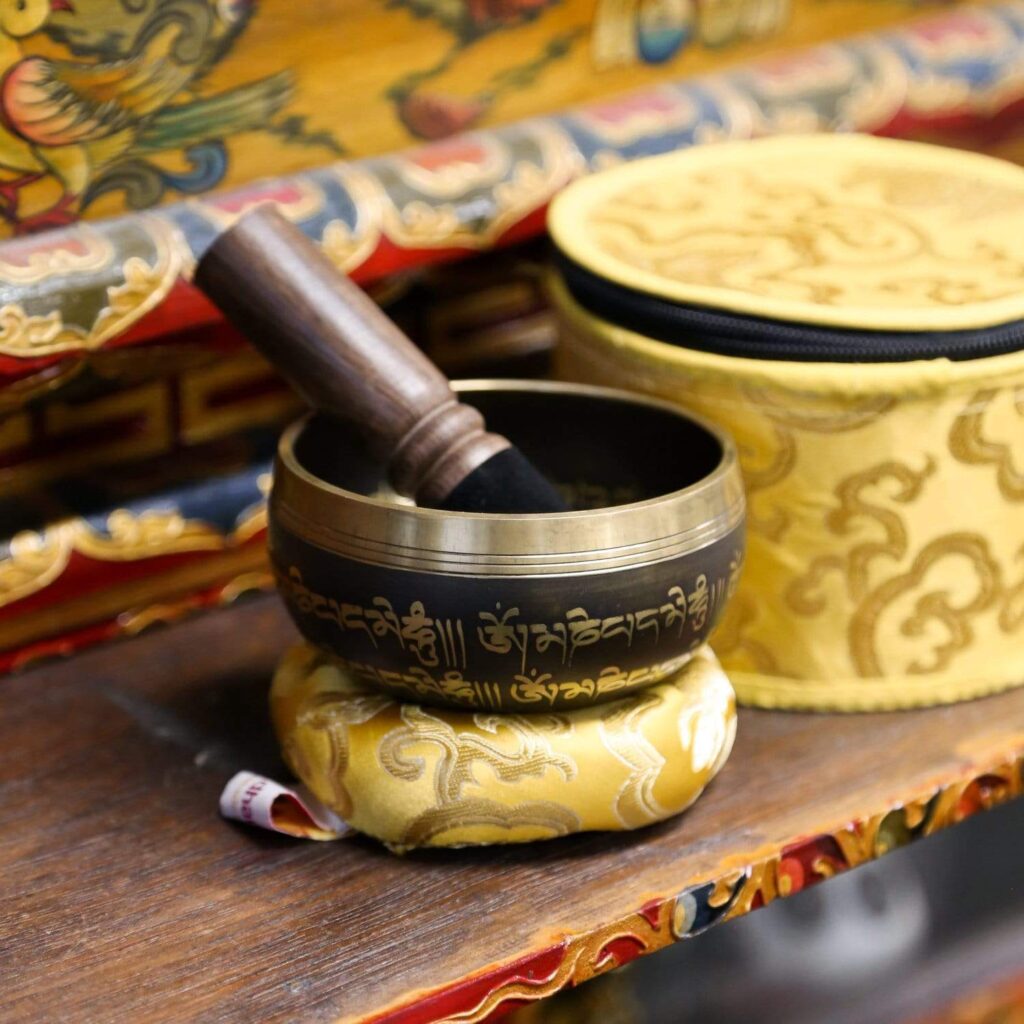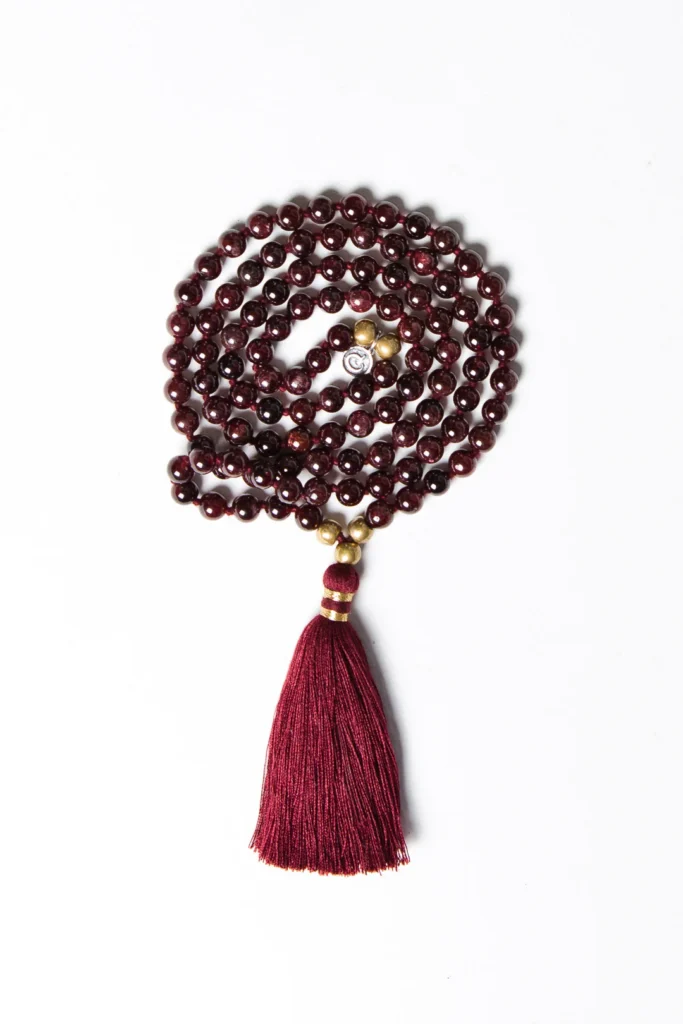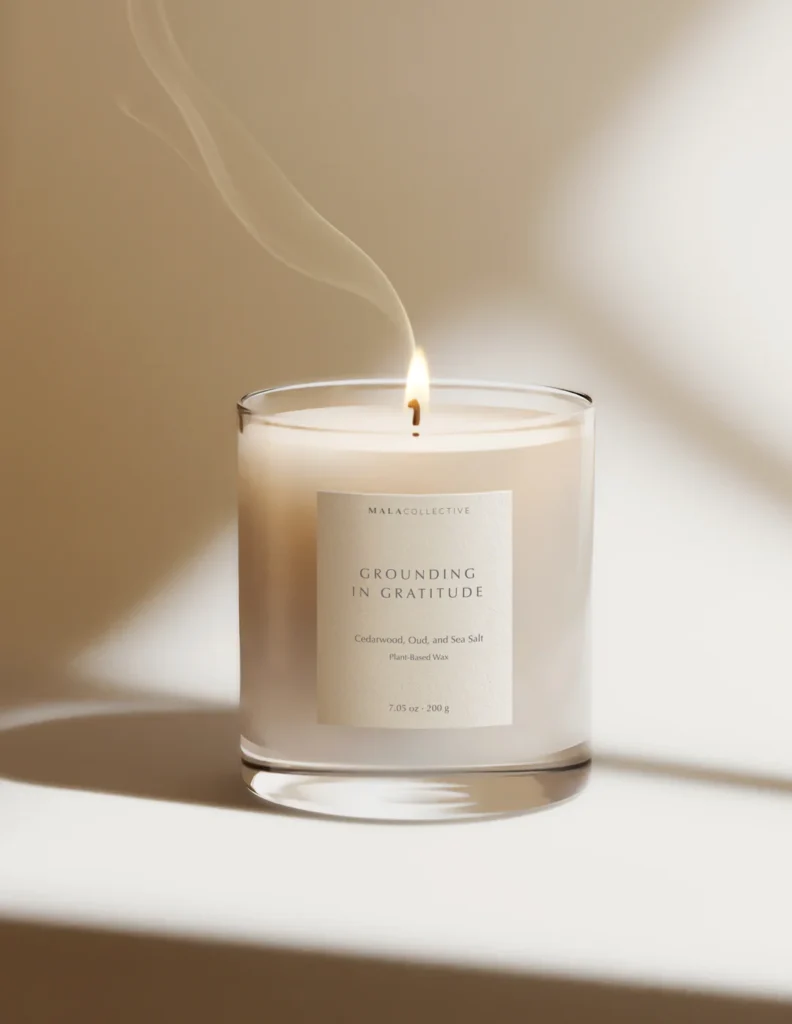7 Best Meditation Tools (Ultimate Enhancement)
Last Updated on May 31, 2023 by Karl
In today’s fast-paced world, finding moments of peace and tranquility has become increasingly important. Meditation offers a path to inner calm and self-discovery, allowing us to cultivate mindfulness and reduce stress. While meditation itself requires no special equipment, incorporating certain tools can greatly enhance the experience, deepening our connection to the practice and aiding in focus and relaxation.
In this blog post, we will explore the seven best meditation tools that can elevate your meditation sessions to new heights. These tools have been utilized for centuries, rooted in ancient traditions and revered by meditation practitioners worldwide. Whether you’re a beginner looking to establish a daily meditation routine or a seasoned meditator seeking to deepen your practice, these tools can provide invaluable support and inspiration along your journey.
What Are The Best Meditation Tools?
1. Meditation Cushion.
What is a Meditation Cushion:

A meditation cushion, also known as a zafu, is a specially designed cushion that provides support and comfort during meditation practice. Traditionally used in Zen Buddhism, these cushions have become popular across various meditation traditions due to their ability to promote proper posture and spinal alignment.
What does it help with:
The primary purpose of a meditation cushion is to provide stability and comfort while meditating. By elevating the hips slightly above the knees, it helps maintain a natural curve in the lower back, relieving strain and discomfort during extended periods of sitting. The cushion also promotes proper alignment of the spine, allowing for a more relaxed and focused meditation practice.
How to use it:
To use a meditation cushion, find a quiet and peaceful spot for your practice. Place the cushion on the floor or a dedicated meditation mat. Sit on the cushion, crossing your legs in a comfortable position, either in a full or half-lotus posture or with your legs folded in front of you. Rest your hands on your knees or in a mudra (hand gesture) of your choice. Adjust the cushion’s height by adding or removing stuffing to ensure your hips are slightly elevated above your knees.
Considerations before buying:
Further Recommendation:
If you’re looking for a comprehensive guide on how to practice Zen meditation, look no further than LotusCrafts’ insightful blog post. Their in-depth article provides step-by-step instructions, practical tips, and guidance on cultivating a Zen meditation practice. From finding the right posture to focusing on the breath and navigating common challenges, LotusCrafts offers valuable insights to help you establish and deepen your meditation practice.
Get The Best Meditation Cushion on
2. Tibet Singing Bowl.
What is a Tibet Singing Bowl:

Tibetan singing bowls, also known as Himalayan singing bowls, are ancient musical instruments that have been used for centuries in spiritual practices, meditation, and healing rituals. These bowls are typically made of a special alloy consisting of different metals, including copper, tin, zinc, and sometimes traces of gold or silver.
The origins of Tibetan singing bowls can be traced back to the Himalayan region, particularly Tibet, Nepal, and India. They have long been used by Tibetan Buddhist monks as part of their rituals and meditation practices. The bowls were believed to have been brought to Tibet from India by the great Buddhist master Padmasambhava in the 8th century. Since then, they have become an integral part of Tibetan culture and are treasured for their soothing and transformative properties.
What does it help with:
Tibet singing bowls produce a resonant sound when struck or rubbed with a mallet. The vibrations and harmonious tones that emanate from the bowls are not only pleasing to the ears but also have a profound effect on the mind and body. The rich, enveloping sound helps to calm the mind, induce relaxation, and create a peaceful atmosphere conducive to deep meditation.
The vibrations produced by the singing bowl also stimulate the body’s natural healing processes. It is believed that the sound waves emitted by the bowl can harmonize imbalances in the body’s energy system, promoting physical, emotional, and spiritual well-being. Many practitioners find the sound and vibrations of the singing bowl to be deeply therapeutic and grounding.
How to use it:
To use a Tibet singing bowl, place it on a flat surface, such as a cushion or a mat. Hold the mallet, usually wrapped in a soft cloth, in one hand, and gently strike the outer rim of the bowl or rub it in a circular motion to create a resonating sound. As the sound builds, focus your attention on the vibrations and allow them to guide you into a state of deep relaxation and meditation. You can also experiment with different striking techniques and mallet positions to create variations in the sound produced by the bowl.
Considerations before buying:
Get The Best Tibet Singing Bowl on
3. Meditation Mala.
What is a Meditation Mala:
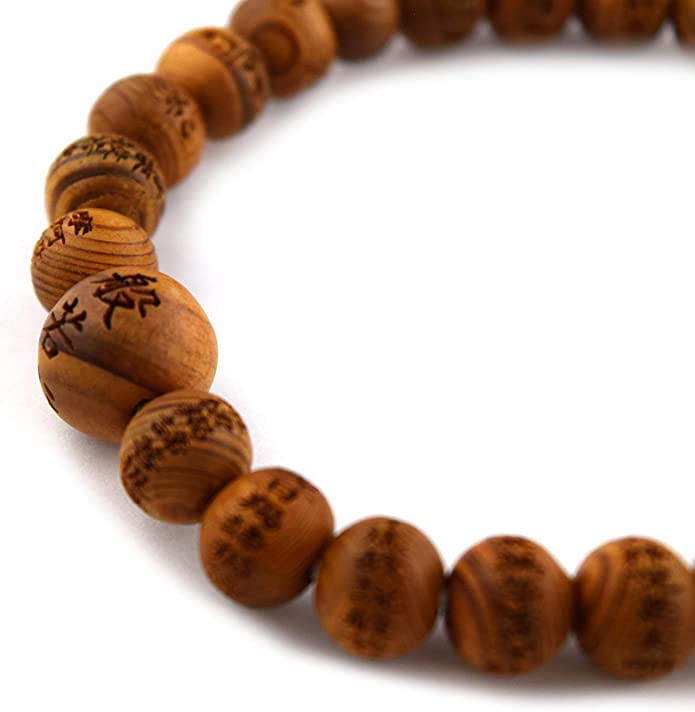
A meditation mala, also known simply as a mala, is a string of beads used for counting and reciting mantras or prayers during meditation. It is a powerful tool that can help deepen focus, cultivate mindfulness, and connect with a sense of spiritual devotion. Malas are commonly used in various meditation practices across different cultures and spiritual traditions.
The use of meditation malas can be traced back thousands of years to ancient India, where they were originally used in Hinduism and later adopted by Buddhism. Malas have since become associated with both traditions and are utilized in a variety of spiritual practices, including meditation, chanting, and prayer. They serve as a tangible reminder of one’s intention and devotion during the meditative journey.
If you want to delve deeper into the rich culture of Zen meditation, exploring related literature can be immensely beneficial. To expand your knowledge and understanding, I recommend checking out my recent post on the 7 best books for Zen meditation. These books provide valuable insights into the principles, techniques, and philosophy of Zen meditation, offering guidance and inspiration for your own practice.
What does it help with:
A meditation mala serves multiple purposes and offers several benefits. Firstly, it provides a physical anchor for the mind, enabling practitioners to stay focused and present during meditation. By gently moving the beads through the fingers, one can maintain a rhythm while reciting mantras or prayers, enhancing concentration and mindfulness.
Additionally, a mala can deepen one’s spiritual connection and serve as a symbol of devotion. The repetition of prayers or mantras with each bead can create a sense of sacredness and help align the mind, body, and spirit. The tactile nature of the mala beads can also promote a calming effect, allowing the practitioner to enter a state of tranquility and inner stillness.
How to use it:
To use a meditation mala, hold it in your dominant hand, with the first bead (the “guru” bead) between your thumb and middle finger. Begin reciting your chosen mantra or prayer, gently moving to the next bead with each repetition. Continue until you have completed a full circuit of the mala, ending once again at the guru bead. It is common to avoid crossing over the guru bead, as it is considered a sacred point.
Considerations before buying:
Get The Best Meditation Mala on
4. Incence and Candles.
What are Incence and Candles

Incense and candles are widely used in various spiritual and meditative practices to create a serene and sacred atmosphere. They have a rich history in Buddhist traditions and are known for their ability to evoke a sense of tranquility and enhance the meditative experience.
In Buddhist temples and monasteries, incense is often burned during ceremonies and meditation sessions as an offering to the Buddha and to purify the environment. Candles, with their soft and flickering light, symbolize the illumination of wisdom and are used to create a serene ambiance conducive to deep meditation.
What does it help with:
Incense and candles serve multiple purposes in meditation practice. Firstly, they help create a sacred and calming atmosphere. The fragrance of incense can invoke a sense of peace and relaxation, while the soft glow of candles adds a gentle and soothing light. The sensory experience created by incense and candles can aid in grounding the mind and fostering a deeper connection to the present moment.
Moreover, incense and candles can act as focal points for meditation. As you sit in meditation, you can direct your attention to the rising smoke of the incense or the gentle flame of the candle. These visual elements can help steady the mind, deepen concentration, and provide a point of focus for your awareness.
How to use it:
Incense: Choose a high-quality incense stick or cone with a scent that resonates with you. Light the incense and place it in an appropriate holder or incense tray. Position the incense in a safe location, ensuring it is not too close to you to avoid any distractions or discomfort. Allow the soothing aroma to fill the space and accompany you during your meditation.
Candles: Select candles that burn evenly and are safe to use in your meditation area. Place them in candle holders or on a sturdy surface away from flammable objects. Light the candles and allow their gentle flame to illuminate the space. As you meditate, softly gaze at the flame or let its presence become a focal point for your attention, helping to still the mind and cultivate inner peace.
Considerations before buying:
Get The Best Incense and Candles on Mala Collection
5. Meditation Crystals.
What are Meditation Crystals
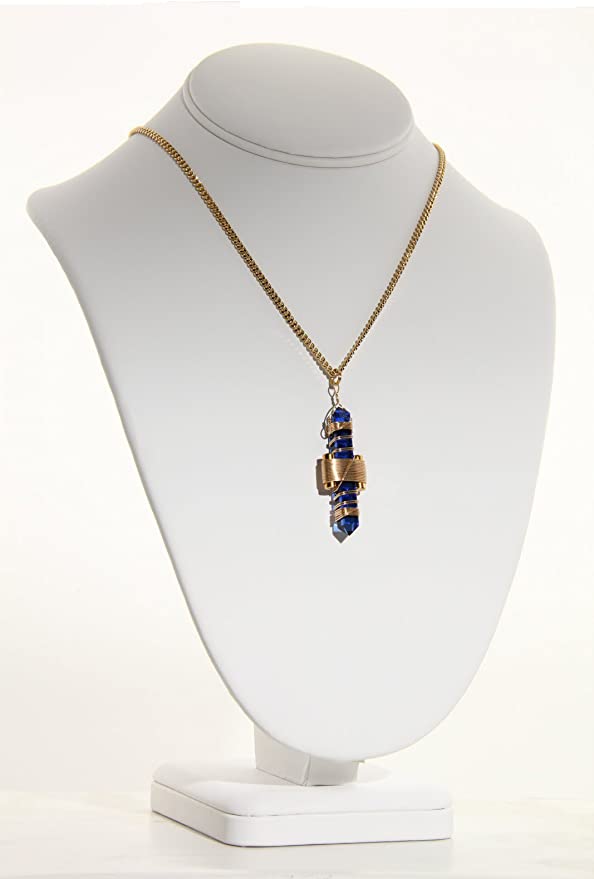
Meditation crystals are natural gemstones and minerals that are revered for their energetic properties and metaphysical significance. These beautiful and vibrant stones have been used for centuries in spiritual practices, including meditation, to enhance focus, deepen awareness, and promote a sense of harmony and balance.
The use of crystals in spiritual practices can be traced back to ancient civilizations, including Buddhist traditions. Crystals hold symbolic and energetic value and are believed to contain healing and transformative properties. In Buddhist culture, crystals are often associated with specific qualities or chakras and are used as aids in meditation and prayer.
What does it help with:
Meditation crystals can serve several purposes in your practice. Firstly, they can act as a point of focus, allowing you to direct your attention and concentration. By holding or gazing at a crystal during meditation, you can anchor your awareness and cultivate a deep sense of presence.
Additionally, crystals are known to carry unique vibrations and energies. Each crystal possesses its own energetic qualities that can influence your state of being during meditation. For example, amethyst is often used for its calming and spiritual properties, while clear quartz is believed to amplify intention and promote clarity of mind. By choosing crystals that align with your intentions and desired state of being, you can enhance the energetic atmosphere of your meditation practice.
How to use it:
Considerations before buying:
Get The Best Meditation Crystals on
6. Meditation Bell.
What is a Meditation Bell:

A meditation bell, also known as a mindfulness bell or singing bowl, is a musical instrument that produces a soothing sound when struck or played. It is commonly used in meditation practices to mark the beginning and end of a session, as well as to bring focus and mindfulness to the present moment.
Meditation bells have a long history in Buddhist traditions, particularly in Tibetan Buddhism. They have been used for centuries as aids in meditation, prayer, and ritual ceremonies. The resonant sound of the bells is believed to clear the mind, promote relaxation, and invite a state of deep concentration.
What does it help with:
The sound of meditation bells serves multiple purposes in meditation practice. Firstly, it acts as a mindfulness cue, reminding practitioners to return their attention to the present moment. When the bell rings, it can serve as a gentle nudge to let go of distractions and refocus on the breath or chosen point of meditation.
Moreover, the soothing and melodic tones produced by the bells help create a calm and serene environment. The sound vibrations can have a calming effect on the mind, promoting a sense of relaxation and tranquility. The sustained resonance of the bells can also act as a focal point for concentration, allowing the mind to settle and become more centered.
How to use it:
Considerations before buying:
Get The Best Meditation Bell on
7. Prayer Wheel.
What is a Prayer Wheel:

A prayer wheel is a cylindrical device that contains written mantras or prayers, usually in the form of a scroll. It is a sacred tool used in Tibetan Buddhism for spiritual and meditative purposes. The prayer wheel is spun in a clockwise direction, and each rotation is believed to have the same effect as reciting the prayers or mantras written inside.
Prayer wheels have a rich history in Tibetan Buddhism and are considered a powerful means of accumulating merit and spreading blessings. The practice of using prayer wheels dates back to ancient times in India and was later adopted and popularized by Tibetan Buddhist practitioners. The spinning of the wheel is seen as a form of meditation and a way to generate positive energy.
What does it help with:
Prayer wheels serve multiple purposes in Buddhist practice. Firstly, they are used as a means of accumulating merit and positive karma. It is believed that by spinning the wheel and reciting the prayers or mantras contained within, one can generate positive energy and purify negative thoughts and actions.
Additionally, the spinning of the prayer wheel is considered a form of meditation. As practitioners turn the wheel, they can focus their attention on the rhythm of the rotations, cultivating mindfulness and a sense of peace. The repetitive motion of spinning the wheel can also help quiet the mind and enhance concentration.
How to use it:
Considerations before buying:
Get The Best Prayer Wheel on
The Transformative Power of Zen: Why Start Your Journey Here?
Zen meditation, also known as Zazen, is a form of meditation rooted in the Zen Buddhist tradition. In this chapter, we will explore the essence of Zen meditation and delve into the reasons why one should consider embarking on this transformative practice.
The Essence of Zen Meditation.
Zen meditation is a practice of sitting in stillness and silence, cultivating a deep state of presence and awareness. It goes beyond mere relaxation or stress reduction and aims to awaken our innate wisdom and insight. Unlike other forms of meditation that focus on concentration or visualization, Zen meditation emphasizes non-striving, non-attachment, and the direct experience of reality as it is.
The Power of Silent Sitting.
At the heart of Zen meditation is the act of sitting in silence, observing the breath and the fluctuations of the mind without judgment. By becoming intimately aware of our thoughts, emotions, and bodily sensations, we develop a greater understanding of the impermanent and ever-changing nature of existence. Through this practice, we cultivate mindfulness, presence, and a deep sense of acceptance.
The Path to Self-Discovery.
Zen meditation is not merely a relaxation technique but a path of self-discovery and awakening. As we sit in stillness, we confront our inner landscape, including the habitual patterns of the mind and the illusions we cling to. By embracing this process with openness and curiosity, we gradually uncover the truth of our being and the interconnectedness of all things.
Cultivating Clarity and Compassion.
Zen meditation fosters clarity of mind, allowing us to see through the illusions of separation and ego. With a clear and compassionate mind, we develop a deeper sense of empathy, understanding, and interconnectedness with others. This leads to a natural inclination to act in ways that benefit not only ourselves but also the world around us.
Transforming Daily Life.
The benefits of Zen meditation extend beyond the meditation cushion, permeating into our daily lives. As we cultivate mindfulness and presence through regular practice, we become more attuned to the richness of each moment. We approach our tasks with renewed focus and purpose, engage in relationships with greater authenticity, and navigate challenges with resilience and equanimity.
In conclusion Zen meditation is a profound practice that invites us to explore the depths of our being and awaken to the present moment. By engaging in silent sitting, we cultivate mindfulness, clarity, and compassion, leading to personal transformation and a deeper understanding of ourselves and the world around us. Whether you are seeking inner peace, self-discovery, or a way to navigate the complexities of life, Zen meditation offers a path worth embarking upon.
Further Recommendation:
If you’re looking for a comprehensive guide on how to practice Zen meditation, look no further than LotusCrafts’ insightful blog post. Their in-depth article provides step-by-step instructions, practical tips, and guidance on cultivating a Zen meditation practice. From finding the right posture to focusing on the breath and navigating common challenges, LotusCrafts offers valuable insights to help you establish and deepen your meditation practice.
Wrap Up.
In this article, we explored the world of meditation and its benefits, as well as the seven best meditation tools to enhance your practice. We began by introducing the concept of meditation and its significance in today’s fast-paced world. Meditation is a practice that allows you to train your mind, reduce stress, improve concentration, and cultivate emotional well-being. It offers numerous physical, mental, and spiritual benefits, making it a valuable addition to your daily routine.
In conclusion, meditation is a transformative practice that can positively impact your mind, body, and spirit. By incorporating the seven best meditation tools into your practice, you can create a supportive environment that enhances your meditation experience. Whether you choose to sit on a comfortable cushion, immerse yourself in the soothing sounds of a singing bowl, or spin a prayer wheel, these tools can deepen your connection to the present moment and facilitate your journey towards self-discovery and well-being.
Last Updated on May 31, 2023 by Karl
Discloser:
Please note that some of the links below may contain affiliate links, which means that I may receive a commission if you decide to purchase a paid plan. However, this will not cost you anything extra, and I have included this information in our privacy policy. Please note that this site is not intended to provide financial advice and is solely for entertainment purposes.

